Occupational environment monitoring at a mirror manufacturing factory
99,000 ₫
Note: The above price is calculated for one sample, and the price may fluctuate depending on the area of the environment to be monitored and market movements. For more accurate pricing support, please refer to the price list or contact our consulting staff directly.
Monitoring the environment of a mirror production factory is a session of collecting, analyzing, and evaluating workplace factors that may be harmful to workers’ health.
Table of Contents
Toggle1. Overview of Mirror Manufacturing Factory
a. What is a Mirror Manufacturing Factory?
Factory manufacturing mirrors is a production facility specialized in processing and manufacturing various types of mirrors. A mirror is a glass material with one reflective surface, widely used in interior decoration, construction, automotive, and other industries.

b. Production stages in a mirror manufacturing factory
The production stages in a mirror manufacturing factory may include:
- Material preparation: High-quality glass sheets are prepared and cut into desired sizes and shapes for mirrors.
- Reflective coating process: Glass sheets are placed into a coating system to apply a reflective layer such as aluminum or silver onto the mirror surface.
- Protective coating process: A protective layer is applied over the reflective layer to protect it from scratches and abrasion.
- Polishing and finishing: The mirror surface is polished and treated to achieve flatness and shine.
- Quality inspection: Mirrors are inspected to ensure there are no defects such as scratches, peeling, or cracks. Inspections also include checking flatness, opacity, and reflectivity.
- Cutting and finishing: Mirrors are cut into the required sizes and shapes. The edges may be polished or framed.
- Final inspection: Mirrors undergo a final inspection to ensure quality and compliance with standards.
- Packing and transportation: Finally, mirrors are packaged and prepared for delivery to end-use locations.

c. Types of machinery used in mirror manufacturing factories
In a mirror manufacturing factory, various types of machinery and equipment are used to perform production processes. Below are some common machines often used in mirror manufacturing factories:
- Glass cutting machines: Used to cut glass sheets into required sizes and shapes for mirrors.
- Reflective coating systems: Systems such as vapor deposition or electroplating machines are used to apply reflective coatings like aluminum or silver onto mirror surfaces.
- Protective coating machines: Used to apply protective layers over mirror surfaces to protect reflective coatings from scratches and abrasion.
- Polishing machines: Used to polish mirror surfaces to achieve flatness and shine.
- Quality inspection machines: Used to check flatness, opacity, reflectivity, and other quality standards of mirrors.
- Cutting and finishing machines: Used to cut mirrors into required sizes and shapes and perform tasks such as edge polishing and framing.
- Packing machines: Used to package mirrors into cartons or boxes for transportation.

d. Possible occupational diseases for workers in mirror manufacturing factories
Workers in mirror manufacturing factories may face some occupational diseases related to environmental and work factors. Some common occupational diseases in the mirror manufacturing industry include:
- Respiratory diseases: Workers may be exposed to glass dust and fine particles during mirror production, causing respiratory problems such as asthma, pneumonia, and occupational lung diseases.
- Eye diseases: Exposure to chemicals and ultraviolet rays during work may cause burns, eye irritation, infections, and other eye problems.
- Skin diseases: Contact with chemicals during mirror production may cause skin irritation, dermatitis, eczema, and other skin problems.
- Occupational accidents: Due to working with machinery and equipment, workers may face risks of accidents such as cuts, injuries, or falls.
- Spinal and musculoskeletal disorders: Prolonged and repetitive tasks in mirror production may cause strain and disorders such as back pain, spinal degeneration, and wrist problems.
To ensure worker safety and health, personal protective measures and safe working procedures should be implemented in mirror manufacturing factories. Regular health checks, sufficient protective equipment, and safety training are also crucial to minimize occupational disease risks.

e. Common types of mirrors on the market
There are many common types of mirrors on the market, used for different purposes and applications. Some common types include:
- Flat mirrors: Standard mirrors with flat surfaces that reflect images accurately. Commonly used in homes, offices, and commercial spaces.
- Back-coated mirrors: These mirrors have a metallic coating on the back, producing high-quality reflected images. They are often used in interior decoration, makeup mirrors, and bathroom mirrors.
- Safety mirrors: Reinforced with a plastic or safety film layer on the back to minimize breakage risks and injuries upon impact. Commonly used in gyms, public restrooms, and healthcare facilities.
- Anti-fog mirrors: Coated with anti-fog layers to prevent condensation on surfaces when temperature differences occur. Commonly used in bathrooms, changing rooms, and high-humidity areas.
- Illuminated mirrors: Integrated with LED lights or other lighting sources to provide illumination for makeup or ambient lighting. Commonly used in dressing rooms, restaurants, hotels, and fashion stores.
2. Overview of Occupational Environment Monitoring Services
a. What is occupational environment monitoring in a mirror manufacturing factory?
Occupational environment monitoring (or workplace environmental measurement) in a mirror manufacturing factory involves collecting, evaluating, and analyzing environmental indicators to apply timely measures, reduce harmful effects on worker health, and prevent occupational diseases. Occupational environment monitoring is mandatory for mirror manufacturing factories.
It plays a vital role in protecting and improving worker health because employees are the primary resources directly generating profits for enterprises. Workers frequently exposed to harmful factors exceeding permissible limits will suffer health impacts and occupational diseases.
REGISTER OCCUPATIONAL ENVIRONMENT MONITORING SERVICE
b. Nam Viet occupational environment monitoring program
Nam Viet’s occupational environment monitoring program is researched and developed by monitoring engineers specializing in labor safety and environmental protection. With the goal of ensuring worker health and safety, this program applies modern measurement methods to monitor air, water, microclimate, physical, and dust factors in the workplace. This program is crucial for ensuring safe working environments and protecting worker health.
Additionally, Nam Viet’s occupational environment monitoring program plays an important role in researching and developing new solutions to improve workplace environmental quality. With the dedication and professionalism of its monitoring experts, Nam Viet’s exclusive program has become a breakthrough in occupational safety management and environmental protection in Vietnam.

c. Standardization in workplace environmental measurement procedures
Standardization in Nam Viet’s workplace measurement procedures is a very important aspect in ensuring measurement result quality. To guarantee accuracy and reliability, this program follows recognized standards and procedures of the Ho Chi Minh City Department of Health. This ensures collected data is highly reliable for evaluating workplace environments and making decisions to improve them for worker health protection.
These standardized procedures are carried out by qualified monitoring specialists with many years of experience, helping managers and experts trust An Toan Nam Viet’s results and make accurate, valuable decisions to protect worker health and the environment.
By applying standardization, Nam Viet demonstrates its commitment to ensuring safe workplaces and positively contributes to occupational safety management and environmental protection in Vietnam.
d. Reporting results of mirror factory monitoring
Monitoring results are prepared according to Form 04, Appendix III issued with Decree 44/2016/ND-CP and made in two copies: one sent to the enterprise that signed the monitoring contract and one kept by the monitoring organization.
The storage period for occupational environment monitoring results is indefinite, as required by law.

e. Frequency of occupational environment monitoring as per law
According to Clause 2, Article 18 of the Law on Occupational Safety and Health 84/2015/QH13, employers must conduct occupational environment monitoring to evaluate harmful factors at least once a year.
f. Deadline for submitting occupational environment monitoring reports
The deadline for submission is before December 31 every year. Enterprises in manufacturing sectors must submit occupational environment monitoring reports to the Department of Health in the locality where their headquarters and employees are located.
When there are changes in technology, production processes, or facility upgrades that may create new harmful factors, enterprises must update occupational hygiene records with the new monitoring requirements.
g. Penalties for violations of occupational environment monitoring for employers
According to Article 27 of Decree 12/2022/ND-CP dated January 17, 2022, on administrative penalties in the field of labor, social insurance, and Vietnamese workers working abroad under contracts:
- Clause 2: A fine of 2,000,000 – 5,000,000 VND for employers who fail to publicly inform employees at the monitoring site and workplace about monitoring results and hazard assessments immediately after results are available.
- Clause 3: A fine of 20,000,000 – 40,000,000 VND for employers failing to conduct occupational environment monitoring to control health hazards as required by law.
- Clause 4: A fine of 40,000,000 – 60,000,000 VND for employers collaborating with monitoring organizations to commit fraud during monitoring activities, without reaching criminal liability.
3. Harmful environmental factors for workers in mirror manufacturing factories
The working environment in mirror manufacturing factories may contain several harmful environmental factors that can affect workers’ health. Below are some potentially harmful environmental factors:
- Chemicals: The mirror manufacturing process may use chemicals such as corrosive solutions, cleaning agents, and solvents. Exposure to these compounds can cause skin, eye, and respiratory irritation, and may lead to more serious health problems if proper safety procedures are not followed.
- Dust and fine particles: The mirror processing process can generate dust and fine particles from cutting, grinding, and coating processes. Inhalation of fine particles can cause pneumonia and other respiratory problems. Sometimes, small particles may cause eye injuries if proper eye protection is not used.
- Noise: Machinery in mirror manufacturing factories can generate high noise levels. Continuous noise over long periods can cause stress, tension, and hearing problems.
- Temperature and humidity: The mirror manufacturing process may create working environments with high temperature or high humidity. These environmental conditions can cause discomfort, fatigue, and affect workers’ health and work performance.
- Ultraviolet rays: During the coating process, ultraviolet light is used to dry the coating layers on mirrors. Prolonged exposure to ultraviolet rays can cause burns, dermatitis, and increase the risk of skin cancer.
REGISTER FOR OCCUPATIONAL ENVIRONMENT MONITORING SERVICE
4. Measures to improve the working environment in mirror manufacturing factories
To improve the working environment in mirror manufacturing factories and protect workers’ health, the following measures can be applied:
- Chemical management: Ensure that the use of chemicals is carried out according to proper safety procedures. Provide guidance to workers on how to use, store, and transport chemicals safely. Limit the use of harmful chemicals and replace them with environmentally and health-friendly substances.
- Dust extraction system: Install effective dust extraction systems to remove dust and fine particles during production. Ensure the dust extraction system is regularly maintained and cleaned to achieve the best performance.
- Personal protective equipment: Provide full and appropriate personal protective equipment, including masks, safety glasses, gloves, and protective clothing. Train employees on the proper use and maintenance of protective equipment.
- Adjusting temperature and humidity: Ensure the working environment has safe and comfortable temperature and humidity levels. Install air conditioning and ventilation systems to regulate the working environment.
- Machine inspection and maintenance: Ensure that machinery and equipment in factories operate efficiently and safely. Perform regular inspections, maintenance, and servicing of machinery to keep them in good working condition and reduce the risk of incidents.
- Training and supervision: Provide training on occupational safety and environmental management for all employees in the factory. Conduct regular supervision to ensure compliance with safety rules and procedures.
- Risk assessment: Conduct risk assessments and identify preventive and risk mitigation measures. Ensure compliance with safety and environmental regulations and standards.
- Regularly organize occupational environment monitoring in factories, collect and analyze harmful factors for workers, thereby adjusting and reducing hazards to prevent occupational diseases for them.
5. Benefits of regular monitoring in mirror manufacturing factories
An Toan Nam Viet provides enterprises with excellent benefits when using occupational environment monitoring services in accordance with Decree 44/2016/ND – CP on the management and control of harmful factors in the working environment affecting workers.
- Enterprises can proactively control harmful factors in workshops or factories.
- Receive consulting and recommendations on measures to minimize harmful factors and improve the quality of the working environment.
- Indirectly protect human resources, which are the main driving force in the enterprise’s development process.
- Minimize the impact of occupational diseases on human health, thereby reducing medical treatment costs in the future.
- Improve workers’ health, leading to assured and sustained product quality and productivity.
- Comply with labor safety laws and avoid legal risks.
- Enhance reputation and professionalism in all aspects, thereby elevating the brand value of the enterprise.
Nam Viet’s occupational environment monitoring service is the solution to minimize the impacts of occupational diseases, contributing to a fresh and high-quality working environment.

6. National occupational environment monitoring center
Occupational environment monitoring center of Nam Viet is a professional unit in monitoring and measuring the quality of the occupational environment throughout all provinces and cities in Vietnam. With a team of experienced monitoring specialists, the center uses modern measuring equipment, ensuring accuracy and reliability.
In addition to providing monitoring services, the center also supports customers in planning, handling, and monitoring occupational environment issues. With the motto “customer-centered”, the center cares about customer satisfaction, meets all customer needs, and is committed to providing the best solutions for enterprises.
REGISTER FOR OCCUPATIONAL ENVIRONMENT MONITORING SERVICE
With investment in technology, equipment, and human resources, Nam Viet’s monitoring center has been and continues to be one of the reputable units in the field of occupational environment monitoring in Ho Chi Minh City with the following goals:
- We always value brand reputation and the quality of our services.
- We provide customers with the best and most suitable solutions possible.
- Together with a team of experienced Masters and Engineers, we aim to protect the environment and bring benefits to enterprises.
- With Nam Viet Occupational Environment Monitoring team, your company will receive professional service from experts in the monitoring field, along with the best cost advantages.
The occupational environment monitoring process at Nam Viet includes the following basic steps:
- Before carrying out occupational environment monitoring, our company always ensures that monitoring machines and equipment are adjusted and calibrated according to legal regulations.
- Strictly follow the occupational environment monitoring procedures committed to the Department of Health.
- Accurately report occupational environment monitoring results to employers.
- In case the monitoring results do not ensure workers’ safety, Nam Viet company will support with corrective solutions, and the workplace will implement as follows:
- Implement measures to improve working conditions to minimize harmful factors and prevent occupational diseases.
- Organize health checkups to detect occupational diseases and related illnesses early for workers in unsafe environments.
- Provide in-kind benefits for workers in accordance with labor law regulations.

7. Occupational environment monitoring quotation
To help enterprises carry out occupational environment monitoring professionally and effectively, Nam Viet provides customers with a high-quality and reasonably priced occupational environment monitoring service quotation.
- Our monitoring quotation provides detailed information about the pricing of the monitoring services we offer, including costs related to travel, measurement, analysis, and reporting results. Customers can rest assured about the accuracy and reliability of the monitoring reports we provide.
- We are committed to always offering the most competitive and reasonable prices in the market, and we are always ready to provide quick and professional consultation and answers to all inquiries about monitoring services.
- With Nam Viet’s monitoring quotation, customers can easily choose service packages that suit their needs. We are committed to bringing customers the highest satisfaction with professional service quality.
No comments yet

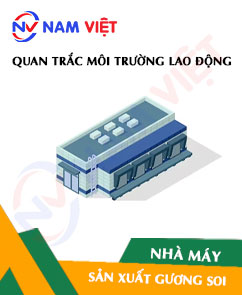
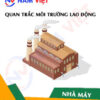
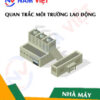
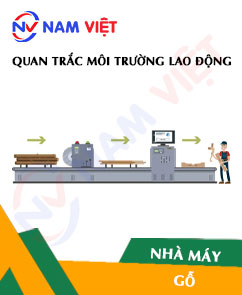

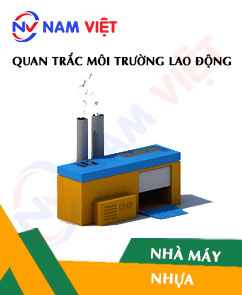
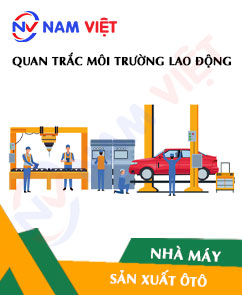



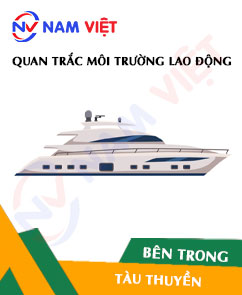
Review Occupational environment monitoring at a mirror manufacturing factory
There are no reviews yet.